Aliens Or Not, Secret Crash Retrieval Programs Are A Very Real Thing

News first broke just over a week ago that a former career American intelligence officer is alleging the U.S. government is concealing a decades-long top-secret 'crash retrieval' program that has overseen the recovery of otherworldly flying machines and their pilots. There remains no hard evidence available to the public to substantiate these claims. Yet the U.S. military and intelligence community's shadowy crash retrieval programs are a very real thing, although the ones we know about are focused on foreign, not alien, technology.
These secretive endeavors are part of a larger ecosystem focused on gathering intelligence — through examining, reverse engineering, and testing — non-U.S. weapon systems and other equipment through so-called Foreign Materiel Exploitation, or FME. This extensive espionage ecosystem, honed over nearly a century of operations, lives in the shadows, but remains an indispensable discipline that has paid off massively time and time again.
Crash retrievals become a hot topic
David Grusch's assertions about what have historically been referred to as unidentified flying objects (UFO) and are now generally described as unidentified aerial phenomena (UAP) first emerged publicly in a June 5 piece published by The Debrief. Grusch is a retired U.S. Air Force officer career intelligence official who has worked for the National Reconnaissance Office (NRO), the National Geospatial-Intelligence Agency (NGA), and the now-defunct UAP Task Force (UAPTF). In 2021, the Department of Defense replaced the UAPTF with an organization that has now evolved into the All-domain Anomaly Resolution Office (AARO).
Grusch has filed a formal whistleblower complaint alleging that information about the recovery of objects of "non-human" origin, including UAPs and their pilots, has been improperly withheld from Congress. He has said some of these items were first retrieved as far back as the 1930s, but says he has not personally seen any of them firsthand. He also says he has been retaliated against by elements of the U.S. government over his push for greater Congressional oversight of these matters, but has not publicly accused those entities by name, citing ongoing investigations of his claims.
Official U.S. government interest in UAPs has surged in recent years, spurred in part by the public disclosure of a number of sightings by U.S. military personnel in the past two decades or so. The War Zone has explored in detail how many of these incidents likely reflect very real Earthly national security threats, such as the now-exposed Chinese government high-altitude balloon surveillance program and drone swarms around U.S. Navy warships.
"To date, AARO has not discovered any verifiable information to substantiate claims that any programs regarding the possession or reverse-engineering of extraterrestrial materials have existed in the past or exist currently," Sue Gough, a Department of Defense spokesperson, told The War Zone last week when asked about Grusch's complaint. "AARO is committed to following the data and its investigation wherever it leads."

"AARO, working with the Office of the General Counsel and the Air Force Office of Special Investigations, has established a safe and secure process for individuals to come forward with information to aid AARO in its congressionally-mandated historical review," she added.
The White House, NASA, and members of Congress involved in intelligence oversight have also since issued similar statements.
What Is Foreign Materiel Exploitation?
While David Grusch's crash retrieval program claims remain up for debate, the U.S. Intelligence Community, including elements of the U.S. military like NRO and NGA, is very much engaged in FME efforts that include the retrieval of flying objects, or parts thereof, from crash sites and other sources for further analysis and evaluation.
For instance, having actual examples of foreign aircraft, or even just certain components, offers unique opportunities to analyze their capabilities and weaknesses, and then to help in the development of new capabilities, countermeasures, and tactics, techniques, and procedures that can be used against them. Other intelligence can be gleaned from specialized testing of real-world components. This includes gaining insight into the doctrine and standard operating procedures of foreign military forces and the industrial capabilities, including material sciences, and other capacities of those countries.
In addition, if the aircraft are flyable, then they can be pitted against friendly designs, as well as other systems, including air defense assets, adding a level of realism to test and evaluation activities and training exercises that cannot necessarily be achieved through simulated means. Even by themselves, certain working subcomponents, such as electronic warfare suites and radars, can be evaluated in similar ways.
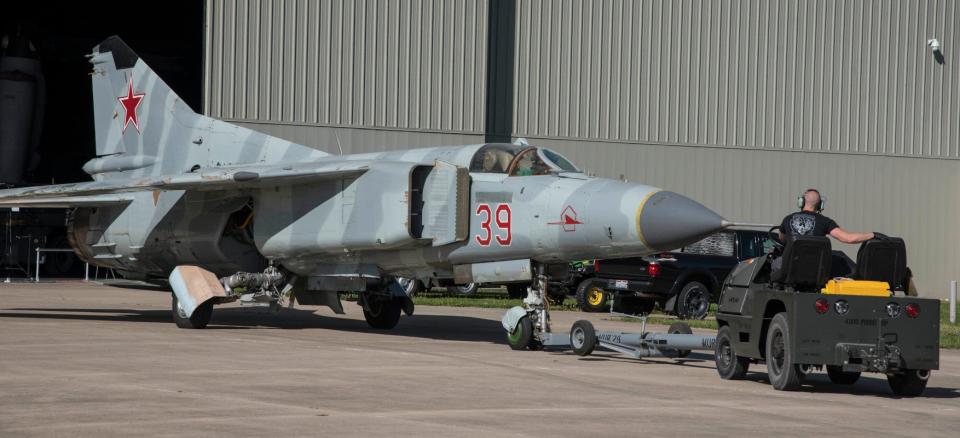
Since the main focus of FME efforts is primarily on picking apart weapon systems and other materiel in use by adversaries or potential adversaries, simply getting ahold of items can be a highly complex and dangerous affair. Whether systems are retrieved are directly retired from the field or indirectly acquired by various means, those operations are generally carried out covertly or clandestinely to avoid arousing suspicions or otherwise creating international incidents.
This all, in turn, creates an additional need for very specialized and often discreet networks to actually recover the items in question, possibly from very remote or austere locations, and then move them to secure test facilities. These activities may need to occur on very short timelines and in contested areas, with or without the cooperation of other governments. They also have to be safely stored and potentially kept completely out of public sight indefinitely. Even the enemy or competitor state knowing the item has been retrieved can compromise its value. Combined, this makes for some of the most challenging logistics imaginable and these abilities require significant resources, talent, and discretion.
Though Grusch's allegations have indirectly called attention to U.S. FME efforts, it's also important to remember that other countries around the world have their own such programs in place. This can create races to get to crash zones first or to retrieve lost friendly aircraft or other systems before adversaries or potential adversaries can get a hold of them.
Managing FME within the U.S. military
The U.S. government's overall FME ecosystem is multi-faceted, but a central component is the Department of Defense-wide Foreign Materiel Program (FMP). The current official directive outlining the FMP is classified, but a declassified 2006 edition says the program was overseen at that time by the Under Secretary of Defense for Intelligence, with the Defense Intelligence Agency (DIA) being the so-called "Executive Agent" for executing it.
How exactly the FMP may have changed on an organizational level since then is unknown. At least one minor change would have occurred in 2019 when the Office of the Under Secretary of Defense for Intelligence, or USD(I) was renamed the Office of the Under Secretary of Defense for Intelligence and Security USD(I&S).
Below DIA and USD(I&S), other U.S. military agencies and offices, including within the different service branches, all support the larger FMP. Coordination and cooperation with other organizations engaged in FME elsewhere within the U.S. government, such as the Central Intelligence Agency (CIA), on the acquisition of foreign aircraft, as well as other weapon systems, through various means, and their exploitation, is also routine. Foreign governments and private companies are sometimes involved, too.
For instance, "the Air Force Test and Evaluation Directorate, Foreign Materiel Office, had an ongoing initiative to involve contractors early in the exploitation process," an unclassified 1998 Department of Defense Inspector General report on the use of FME intelligence explains. "Although the initiative pertained only to electronic warfare systems, the Air Force had plans to expand the program to other systems depending on the successes and lessons learned from that program."
Today, when it comes to the retrieval and subsequent intelligence exploitation of foreign aircraft, as well as missiles and spacecraft, or what might be left of them, the U.S. Air Force's National Air and Space Intelligence Center (NASIC), headquartered at Wright-Patterson Air Force Base in Ohio, is a key actor. NASIC's website says that it is “the Department of Defense’s primary source for foreign air and space threat analysis" and it includes a dedicated Foreign Materiel Exploitation Squadron.
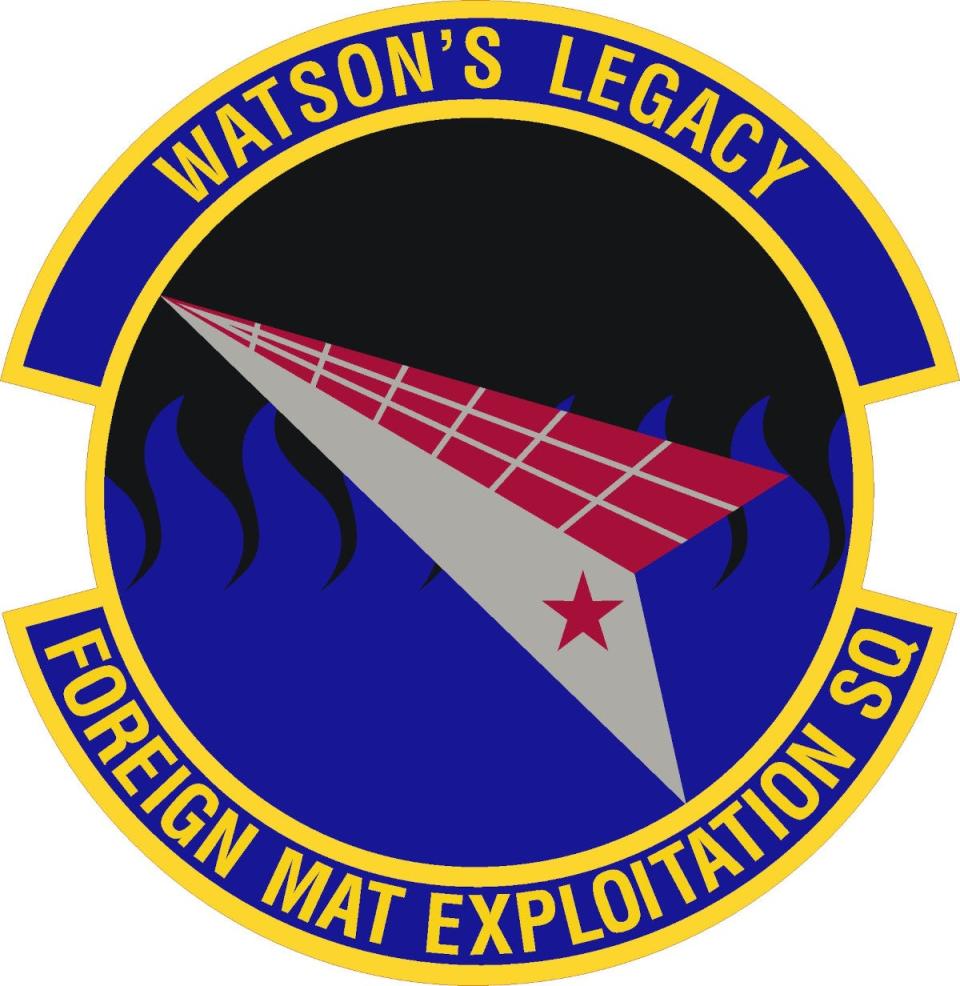
"Depending on the classification of the materials obtained... a team of the United States’ most qualified, knowledgeable, and tech-savvy sleuths grab their scalpels and start dissecting," according to the Air Force. "Their analysis and reverse engineering is performed in some of the most heavily fortified, controlled, and monitored facilities in the military."
The specific mention here of reverse engineering is important to highlight. Not all recovered items may be complete or workable, requiring scientists and engineers to use various means to either make them functional or effectively recreate them. This process in itself can provide additional understanding about the capabilities of the item in question, how it might be employed, and the resources required to produce it. With regard to the latter point, this can include valuable insights into potential foreign advances in material science and production capabilities.
Long-standing intelligence demands
It is important to stress that this kind of intelligence activity is not new. Though it hasn't always been called FME, interest in this kind of hands-on technical intelligence gathering within the U.S. government well predates the current Department of Defense FMP.
By World War II, FME-style programs had become increasingly more formalized, and a particular focus on acquiring foreign aircraft and other aerospace technologies by whatever means available had emerged. Work in this regard done by the U.S. military and other allied forces during the war also underscored the critical importance of reverse engineering.
"Every enemy airplane we have received is usually short of something, or something has been broken in shipment, and in most cases we have had to manufacture the repair parts to get the airplanes in commission," then-U.S. Army Air Forces Brig. Gen. Frank Carroll wrote in 1944, according to Fredrick Johnsen's 2014 book Captured Eagles. "Our supply of spares for the fighter types of German airplanes is extremely limited due principle to the obvious fact that German fighters are rarely brought down over Allied territory. However, we will do the best we can on furnishing any spares, and if absolutely necessary will try to manufacture minor parts to keep the airplanes flying."
Carroll, who was later promoted to the rank of Major General and finished his military career as a member of the U.S. Air Force, was chief of the experimental engineering section's research and development branch at what was then called Wright Field at the time.
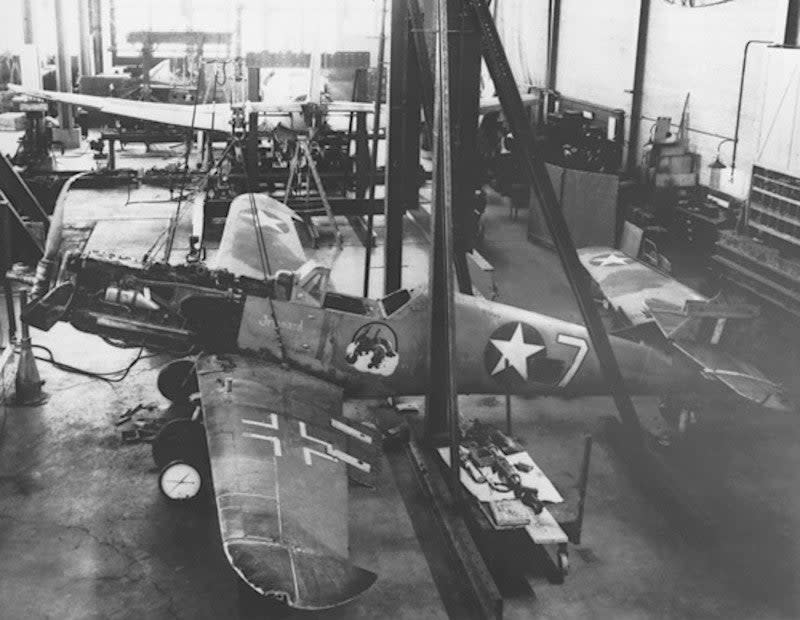
FME-type work continued after World War II, enabled in part by the relocation of Nazi scientists, engineers, and other specialists to the United States through a secret program called Operation Paperclip. Further study of captured German aircraft, especially, directly contributed to post-war U.S. aviation developments, including with regard to swept-wing jet-powered aircraft.
Cold War creates new FME needs, opportunities
With the emergence of the Cold War, attention shifted within the U.S. military and intelligence agencies like the CIA to acquiring Soviet (and later Chinese) aircraft types. While many of these efforts remain shrouded in secrecy, various examples have become a matter of public record over the years.
One of these most famous known retrievals of a Soviet military aircraft is the U.S. government's acquisition of its first complete, flyable Soviet MiG-15 jet fighter in 1953. Of course, retrieval in this case simply meant collecting the aircraft from South Korea after Northern Korean pilot No Kum Sok used it as his means to defect to the West.
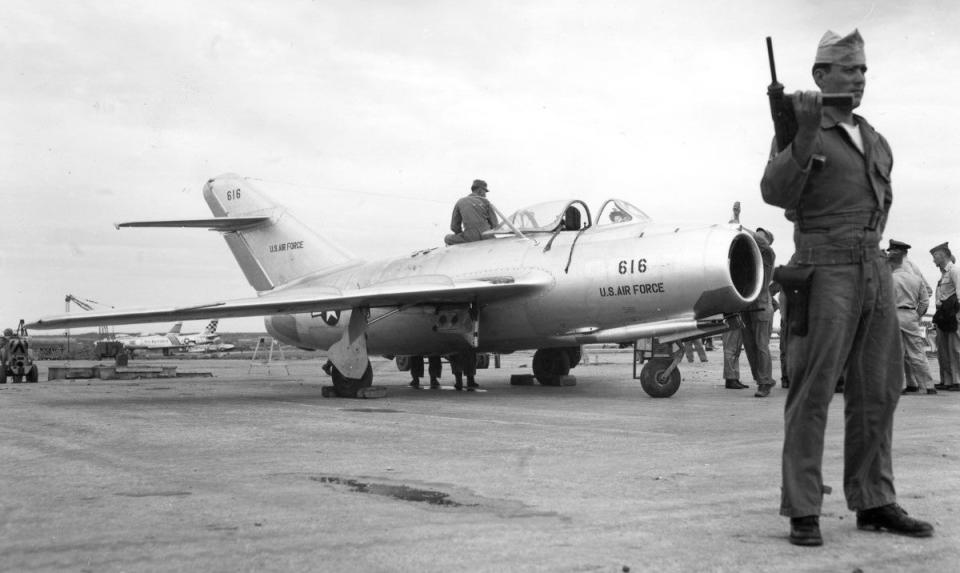
No claimed he had not heard of a $100,000 reward (around $1.14 million in 2023 dollars) American officials had put up for anyone willing to do exactly what he had done. His defection had come just months after an armistice agreement effectively ended the Korean War. Observations of the MiG-15's performance during that conflict had indicated that the aircraft was superior in at least some respects to contemporary Western designs and the U.S. military, in particular, had been desperate to get ahold of one for deeper analysis and evaluation.
Initial FME-type flight testing of No's MiG-15 took place in Japan, with the legendary Brigadier General Charles "Chuck" Yeager (then a Major) being among those to take the stick. It was subsequently back to Wright-Patterson for more evaluations and for NASIC's predecessors to completely tear down. The testing and evaluations yielded important information about the jet's capabilities and limitations, including when pitted against contemporary U.S. jet fighters like the F-86 Sabre and bombers like B-47 Stratojet. What was then known as the Air Technical Intelligence Center went so far as to publish a flight manual that was explicitly intended, in part, to give American pilots the knowledge required to steal a MiG-15 and fly to safety if they were caught behind enemy lines.
https://www.youtube.com/watch?v=gIUQB3XptKA
By 1961, the Air Force had established a dedicated Foreign Technology Division (FTD) within Air Force Systems Command (AFSC) to oversee FME efforts within the service. Hunting down MiGs and other Soviet and Chinese jets, as well as associated weapons, mission systems, engines, and other important components quickly became central to FTD's work. Acquiring adversary surface-to-air missiles, like the iconic Soviet SA-2 Guideline, was another important focus area.
FTD worked hand-in-hand with the CIA, Army, and Navy, as well as foreign allies and partners, in these efforts. Aircraft and missiles, or parts thereof, were often retrieved directly or indirectly from crash sites. As a prime example of the multi-faceted nature of all this, in 1966 the U.S. government got access to the remains of a Yak-28P Firebar interceptor, viewed as one of the Soviet Union's most advanced combat jets at the time, after it crashed in West Berlin and was recovered by British forces there.
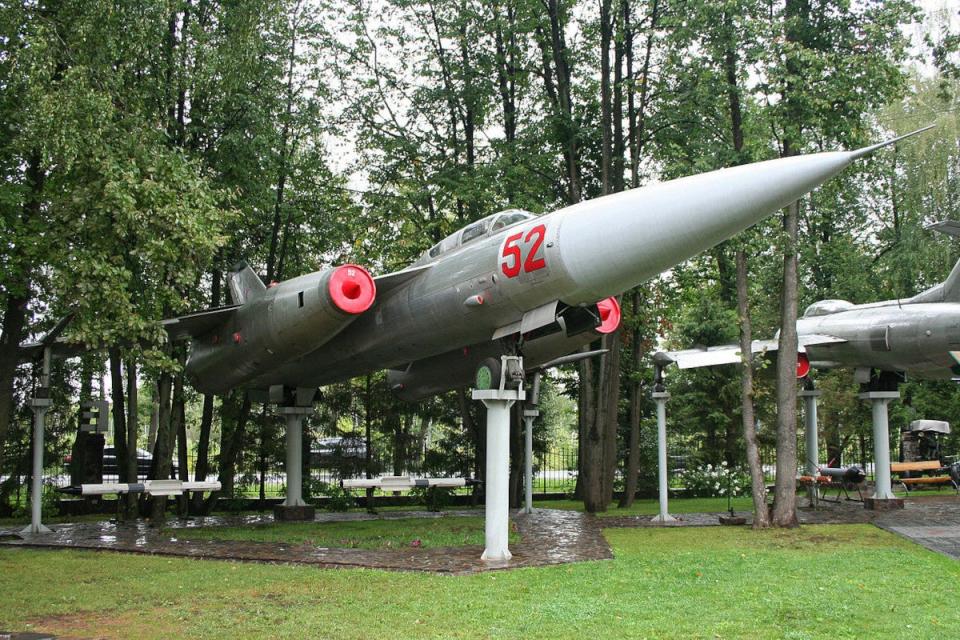
Scouring the bottom of the ocean
Crash zones with materiel U.S. teams might want to recover were not always on land. Soviet intercontinental ballistic missile testing in the Pacific starting in the 1960s, which often saw parts of those weapons fall into the sea, was a particular driving factor behind U.S. interest in underwater retrieval capabilities. Interest in the Soviet Union's burgeoning space programs was another area where the ability to snatch debris from the seabed was particularly relevant.
The U.S. Navy subsequently initiated programs to develop deep-diving submersibles and dedicated special mission submarines capable of recovering items from the seabed. One such program, nicknamed Sand Dollar, called for the creation of a crewed submersible capable of diving down to depths up to 20,000 feet specifically to be "capable of locating [missile nose cones] or space vehicle components of Soviet origin (or those of any other nation)," according to a formerly top-secret status report.
In 1969, the Navy put a unique nuclear-powered deep-diving mini-submarine, known as the NR-1, into service. NR-1 had the ability to manipulate and recover objects while operating down to depths of up to half a mile. It was utilized for a variety of scientific research and development and test and evaluation tasks, as well as salvage missions.
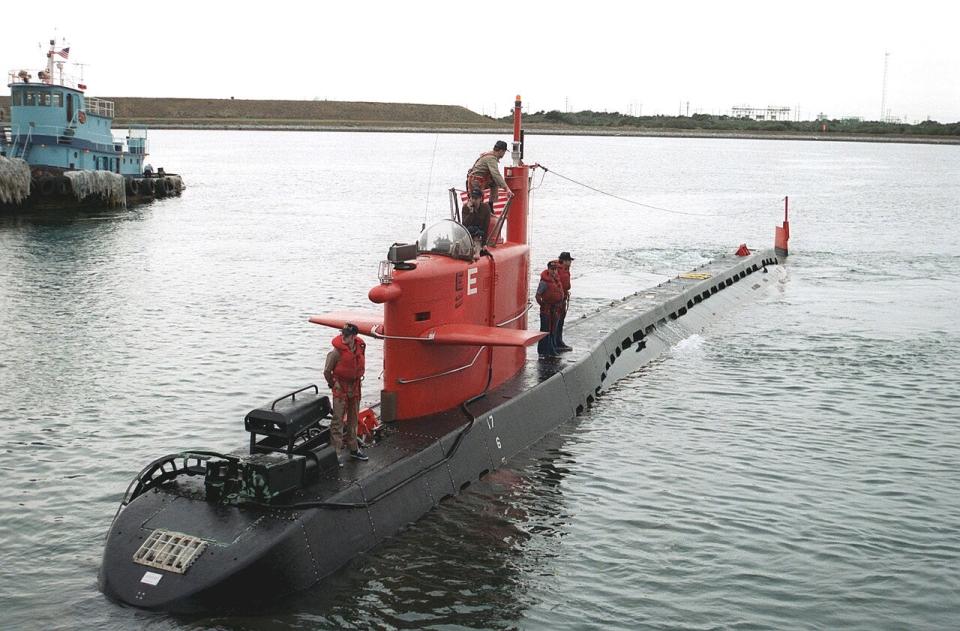
Much of NR-1's work remains classified, but the Navy did disclose its use to recover various parts of an F-14 Tomcat fighter jet that fell off into the Atlantic Ocean from the deck of the aircraft carrier USS John F. Kennedy during an exercise in 1976. This included the retrieval of at least one of the AIM-54 Phoenix long-range air-to-air missiles that had been loaded on the aircraft at that time. Both the F-14 and the AIM-54 were relatively new and very sensitive weapon systems at the time, and this recovery effort also highlights efforts to counter foreign FME collection programs.
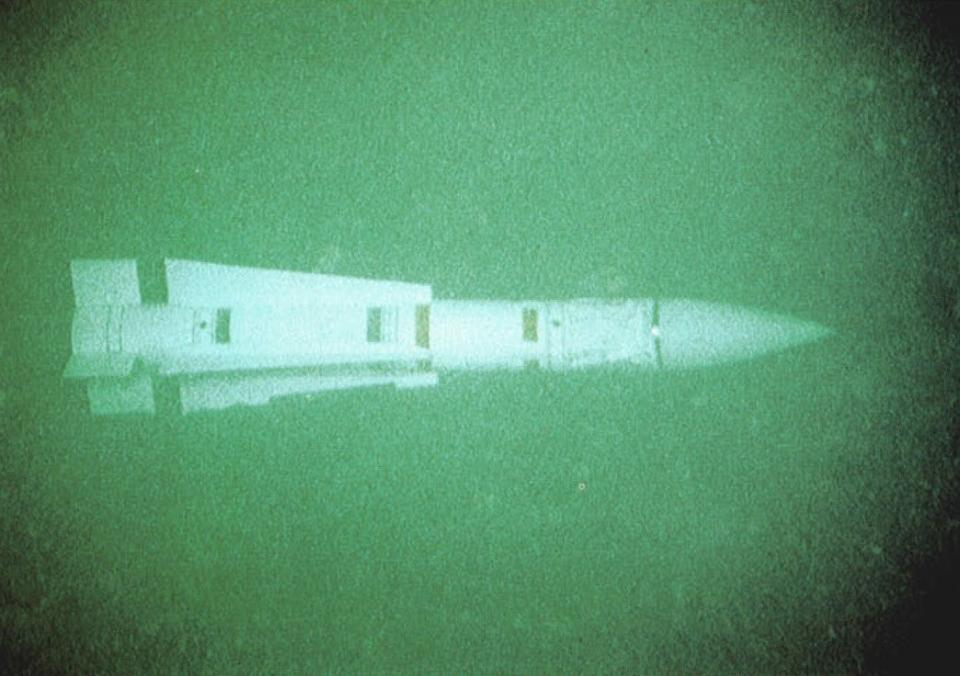
Specialized surface ships were also built and employed not just by the Navy, but also by the CIA. The most famous known example of the CIA conducting such an operation is Project Azorian. This clandestine effort involved the creation of a massive deep-sea salvage vessel, the Hughes Glomar Explorer, for the express purpose of retrieving the sunken Soviet Golf II class diesel-electric ballistic missile submarine K-129.
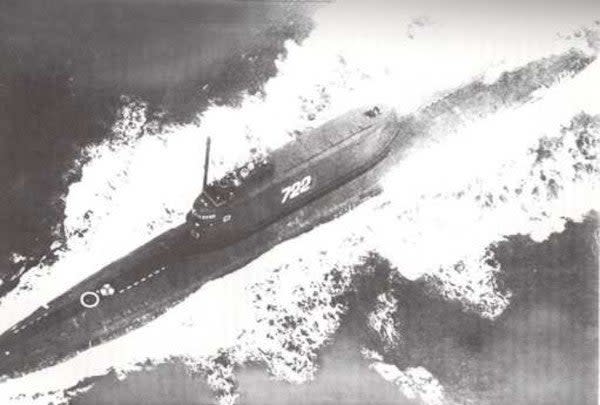
K-129, which was carrying R-21 nuclear-armed submarine-launched ballistic missiles, also known in the West as SS-N-5 Serbs, had sunk in the Pacific in 1968. The U.S. Navy had been able to pinpoint its location, but did not have the immediate means to recover it. The CIA subsequently worked closely with the enigmatic Howard Hughes, through his company Global Marine Development, to launch a recovery mission using the Hughes Glomar Explorer, a modified drillship.
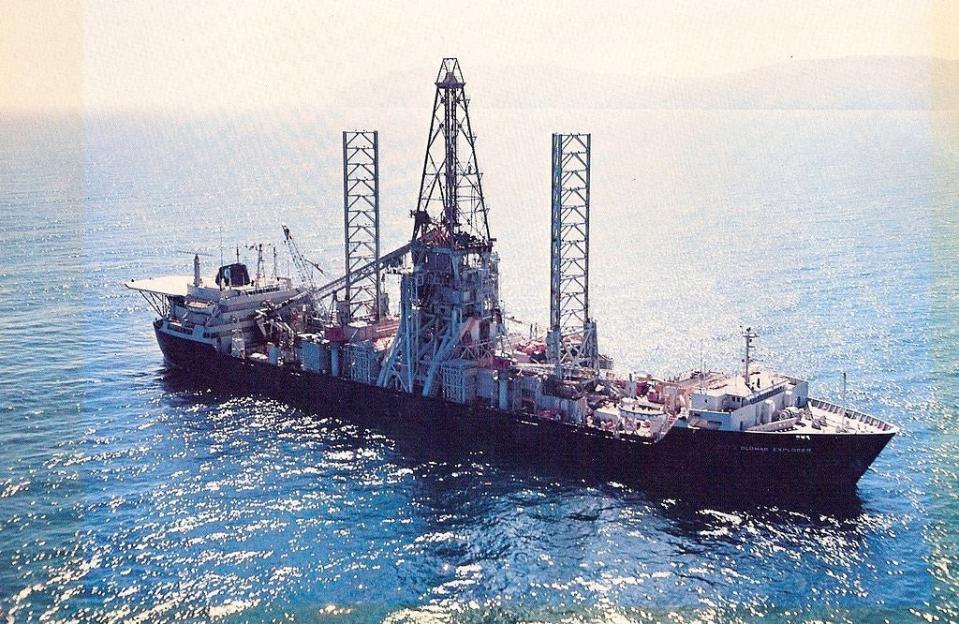
The operation was partially successful, with a portion of K-129 being raised from the ocean floor in 1974. The cover story Hughes devised, that the Hughes Glomar Explorer would be used to extract manganese nodules from the bottom of the ocean, was also very successful. However, the truth still emerged within a year. After the initial media reports, attempts to obtain more information from the CIA about that incident via the Freedom of Information Act (FOIA) were met with responses that the agency could neither confirm nor deny any of the details. This type of response to FOIA requests has since become colloquially known as a "Glomar response" in direct reference to Project Azorian.
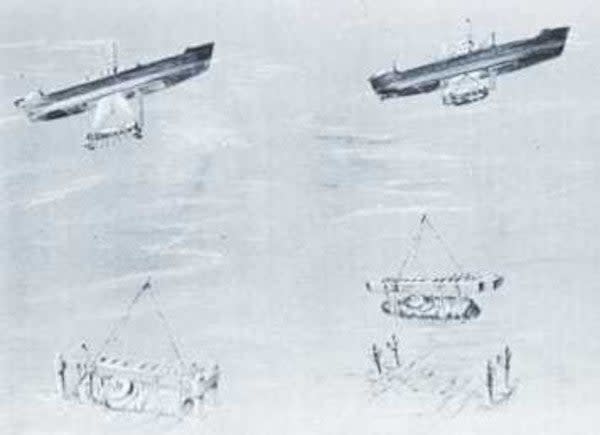
Since then, the CIA has publicly acknowledged the operation and disclosed official details about it. After years of service with various companies doing much more mundane deep-sea drilling work, what had been renamed by that time as the GSF Explorer was sent off to be scrapped in 2015.
Other sources of FME intelligence
Foreign aircraft were obtained through further defections, like the Soviet-made MiG-21 that Iraqi pilot Munir Redfa brought with him to Israel in 1966. Israeli authorities had convinced Munir to flee in a scheme that sounds ripped from a spy thriller and subsequently marked it "007" in a direct reference to the fictional super spy James Bond. Scottish actor Sean Connery, the first individual to play the role of Bond on screen, actually had the opportunity to see the aircraft in 1967. You can read more about all of this here.

Munir's MiG-21 was subsequently sent to the United States for FTD to pick over as part of a project nicknamed Have Doughnut. Actual flight testing of the jet, which was given the cover designation YF-110, took place at the Air Force's top-secret test facility at Groom Lake in Nevada, better known as Area 51.
https://www.youtube.com/watch?v=reVZ9aPYi9A
Defections, unfortunately, didn't always lead to a permanent acquisition of an aircraft, though such incidents still often gave specialists from the United States and other countries opportunities to examine them before they had to be returned.
"The Danish Foreign Ministry informed the British Ambassador on 9 March [1953] that test flights of the Polish MIG-15 [sic] which landed on Bornholm last week will not be permitted and that all tests must be completed by 16 March. It indicated that this was the government's final position and stated that a 'Danish facade' for examination of the plane must be maintained," reads one now-declassified CIA intelligence bulletin, which also stressed the desire of Danish authorities to get the jet back to Poland as quickly as possible. "According to the US Embassy in Copenhagen, American technicians now believe a reasonably complete primary examination can be made within four days."
Clandestine purchases, typically orchestrated by the CIA, or fronts and cutouts acting on their behalf, were another means of getting foreign aircraft, missiles, and other related systems. For instance, in 1965, the CIA, together with the Air Force and the Army, began working together to acquire an early version of the Soviet Mi-8 Hip helicopter as part of a project called Chuck Hole. The now iconic Hip only officially entered Soviet service in 1967. According to a declassified 1966 Army document, the cost of buying the helicopter secretly was pegged at $643,000 at that time, equivalent to just over $6 million in 2023 dollars.
The U.S. FME enterprise continues to evolve
In 1977, the Air Force, in particular, took another step forward in aircraft-related FME with the establishment of the top-secret 4477th Test and Evaluation Squadron, nicknamed the Red Eagles, at the equally secretive Tonopah Test Range Airport in Nevada. This unit took over direct responsibility for working with captured Soviet and Chinese combat jets as a project nicknamed Constant Peg. The service also stood up the 6513th Test Squadron, nicknamed the Red Hats, officially headquartered at Edwards Air Base in California that same year. That unit used these captured aircraft to support a variety of test and evaluation and training efforts with these recovered aircraft, including as mock adversaries in closely guarded training exercises staged out of Area 51.
https://www.youtube.com/watch?v=U8fKp6Nd8YQ
Over the years, the Constant Peg fleet is known to have included flying examples of Soviet MiG-17 Fresco, MiG-21 Fishbed, and MiG-23 Flogger combat jets, as well as Chinese Chengdu J-7B derivatives of the MiG-21. Decades after Brig. Gen. Carroll had noted the difficulties in keeping captured Axis aircraft in the air, and highlighted the need for reverse-engineering to support FME work, the 4477th Test and Evaluation Squadron experienced much the same issues with its diverse array of jets.
"The MiGs we flew came from another land. They were junk, scrap, wrecks, and derelicts when we got them, having been sat in a swamp or a desert and left to rot," retired Air Force Col. Gaillard Peck wrote in his 2012 book America's Secret MiG Squadron: The Red Eagles of Project Constant Peg, a first-hand account of the program. "We brought them back, and without any tech manuals they were fully restored after many months of hard work."
FTD, as a whole, which was eventually subsumed into what became NASIC, continued to conduct FME on other non-flying aircraft and related components, as well as missiles and even possible parts of crashed foreign space assets. Some of this work was done by Air Force teams, often working with other personnel from other U.S. military and organizations, in foreign countries if the circumstances did not allow for the quick return of complete aircraft or other systems back to the United States.
In 1978, an Air Force-led team worked with the Taiwanese Air Force to exploit a Chinese J-6 copy of the Soviet MiG-19 fighter under Project Have Boat. A defector had flown that jet to Taiwan from the mainland the year before and authorities on the island had decided to put the aircraft on display at their Air Force Academy. As a result, various testing was conducted there and then the aircraft's engine, cannon, and identification friend or foe (IFF) system were stripped and sent to the United States.
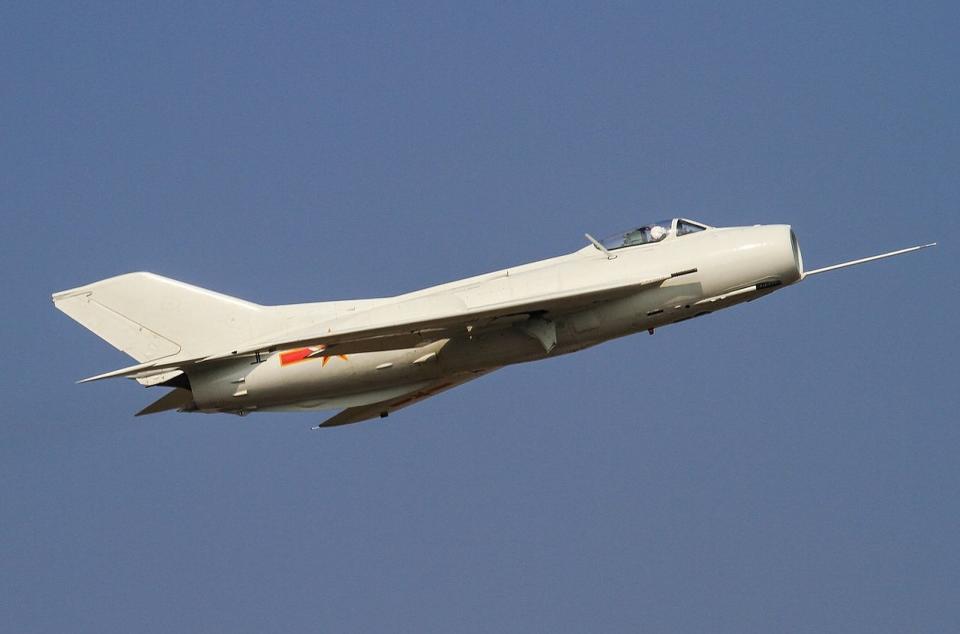
That same year, in what was nicknamed Project Have Foam, Air Force personnel had the opportunity to examine the engine and the RSBN-series radio navigation system from a crashed Soviet Su-20 Fitter combat jet. The RSBN type used in the Fitter could also be used to help improve accuracy during bombing runs. This FME work reportedly took place, at least in part, in West Berlin.
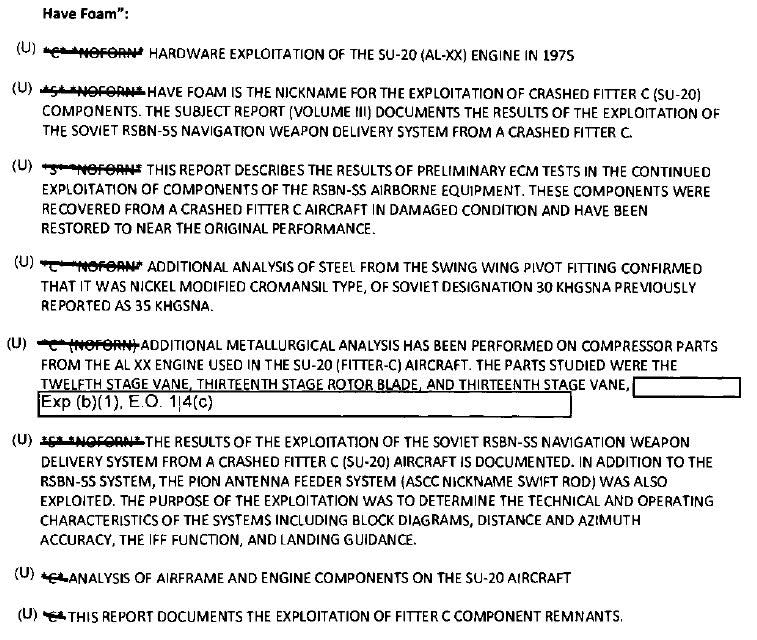
In 1980, a two-person Air Force team traveled to Somalia to do an initial assessment of the remains of a MiG-21 and a MiG-23, both of which had belonged to the Ethiopian Air Force and had gone down between the two countries. Both aircraft were severely damaged but were judged to have still contained components that could be useful in various contexts. It was also apparently the first time U.S. personnel had ever been able to closely examine a MiG-21bis variant in any condition. This was the most advanced production version to come out of the Soviet Union and was also known to NATO as the Fishbed-L/N.
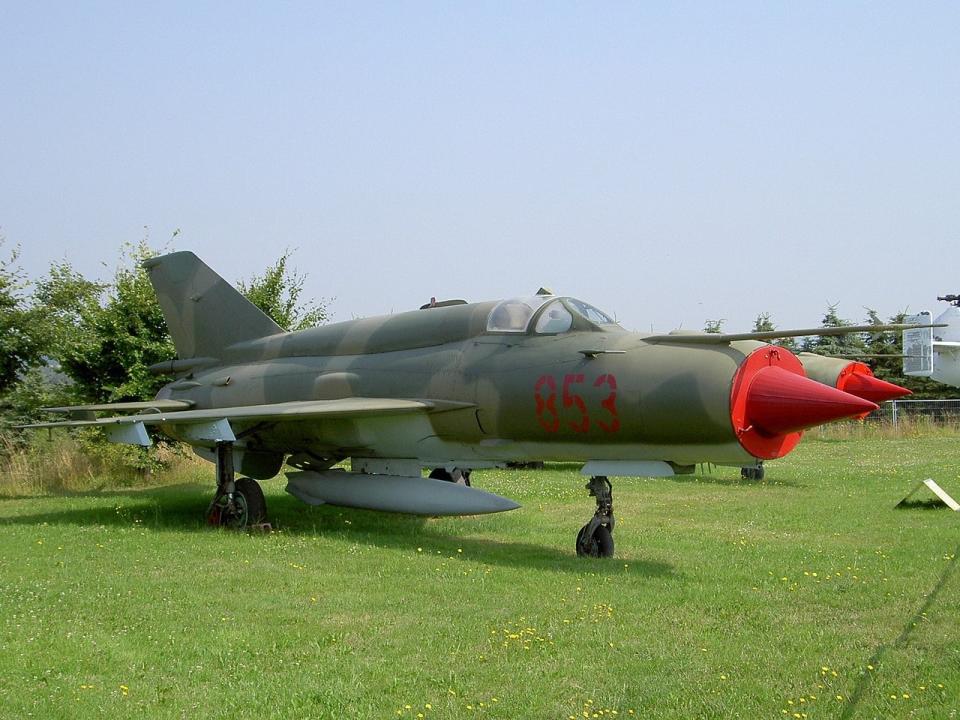
The entire cockpit and other potions of the MiG-23 were brought back to the United States for us as "displays for the Air Force RED FLAG/Soviet Awareness Program," according to a now-declassified document. This sounds very much like what is known today as the Threat Training Facility at Nellis Air Force Base in Nevada, which is also more colloquially referred to as the "Petting Zoo." Nellis is also the hub for the Air Force's Red Flag exercises, the world's premier large force air combat training event.
As of 2022, the Petting Zoo's inventory included examples of various Soviet-designed aircraft, missiles, and air defense systems, among other things, as you can read more about here.
https://www.youtube.com/watch?v=W-aC4wAYg74\u0026t=141s
It's interesting to note that Information that is publicly available now about Have Foam and the Somalia trip both specifically highlight the industrial intelligence value of FME.
"Analysis of steel from the swing wing pivot fitting confirmed that it was [a] nickel modified cromansil type of Soviet designation 30 KhGSNA [that had been previously] reported as 35 KhGSNA," according to a report detailing the Have Foam work. "Additional metallurgical analysis has been performed on compressor parts from the... engine."
"Collection of factory markings and serial numbers will bolster DIA/CIA estimates of MiG-23 production," a review of the Air Force team's 1980 trip to Somalia notes. "Examination of a crashed Libyan MiG-23 in Italy last summer indicated previous production estimates to overly conservative."
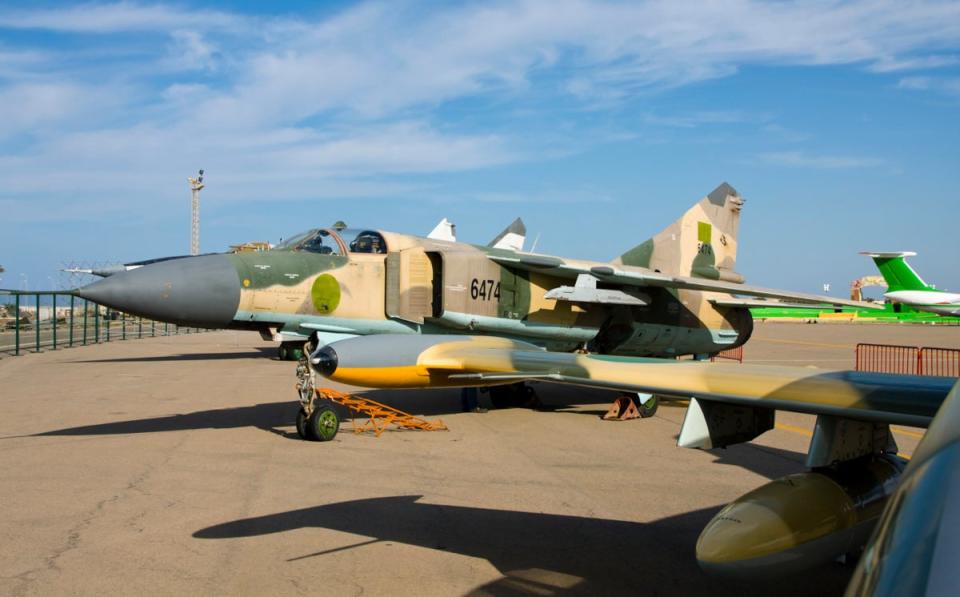
Operation Mount Hope III
Though the Air Force was, and continues to be, at the center of much of the U.S. government's crash retrieval efforts and other FME programs to acquire foreign aircraft and aerospace articles, other entities have been very actively involved in this, too.
A particular famous aviation-focused retrieval mission led by another service occurred in 1988 when the U.S. Army snatched a downed Russian-made Mi-25 Hind attack helicopter, an export version of the iconic Mi-24, from an air base in northern Chad. The helicopter had been left there by retreating Libyan forces at the end of a conflict commonly referred to as the Toyota War.

In what was nicknamed Operation Mount Hope III, the Army's elite 160th Special Operations Aviation Regiment, together with members of the service's equally elite Delta Force and Air Force pararescuemen, secured the Hind, broke it down, and slung the core of the helicopter under an MH-47D Chinook. It was then flown to the Chadian capital N’Djamena in the southern end of the country and loaded onto an Air Force C-5 Galaxy cargo plane for shipment back to the United States.
French forces in Chad also supported the operation and had already been in the country salvaging aircraft and equipment for their own use.

Increasingly standardized FME collection policies and procedures
By the end of the Cold War, policies and procedures for the retrieval of foreign aircraft that had crashed or otherwise came into the hands of U.S. forces had also become more formalized. As an example, U.S. Air Forces in Europe (USAFE) eventually put a formal program in place for what it described as "opportunity collection" of intelligence, defined as "opportunities to acquire information of intelligence value either while performing their normal duties or by pure chance."
A heavily redacted copy of a regulation outlining this program, which was nicknamed Creek Grab, from 1990 does still show that included policies and procedures for dealing with defectors and other opportunities to gain access to foreign aircraft and other systems. That document also makes references to a separate USAFE regulation specifically covering what to do about "Communist-Controlled Aircraft Landing at U.S. Military Installations Overseas" and an Operations Plan (OPLAN) nicknamed Have Bridge, created by FTD, having to do with the "Acquisition, Processing, and Reporting of Foreign Material."
The Creek Grab document also highlights the separate Cold War practice of encouraging U.S. personnel to try to gain insight into aircraft and other weapon systems whenever possible and includes instructions for how to discreetly photograph potentially interesting aspects of a plane. Diplomatic or other specialized access through exchanges with the Soviets or their Warsaw Pact allies, as well as international events like air shows, might afford such opportunities.
"Get the job done quickly – avoid conflict with crew, local police, and diplomatic personnel," the Creek Grab regulation advises. "Avoid political problems."
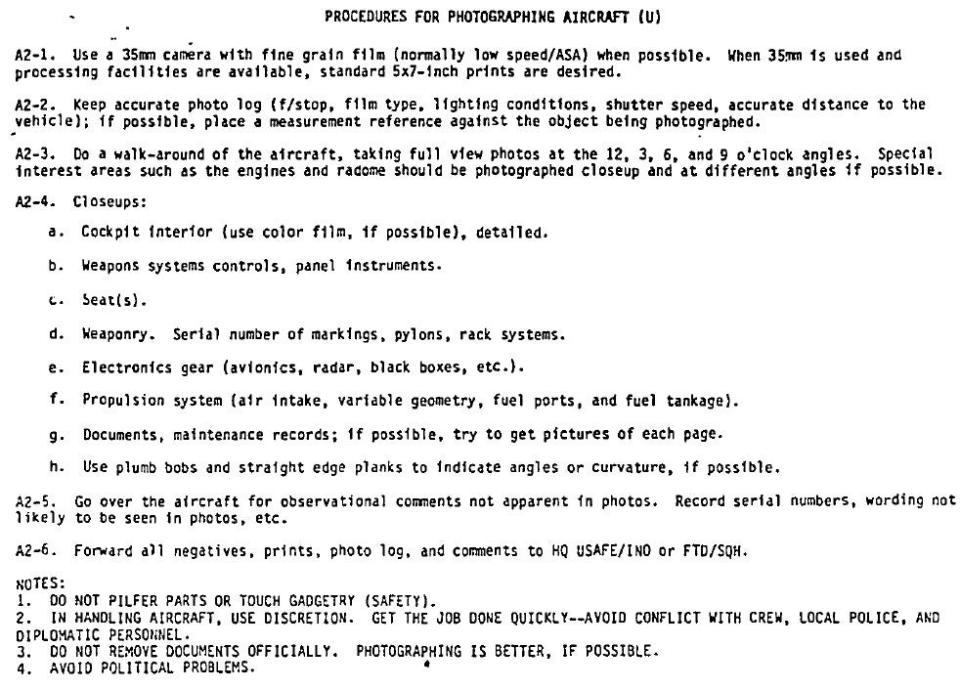
Post-Cold War U.S. FME
The end of the Cold War of course didn't put an end to FME. It did present new opportunities for acquiring aircraft and other systems, including simply purchasing them on what had become a more open international market. Clandestine, covert, and otherwise more discreet acquisitions do of course still remain an important part of the process.
The exact organizational structure of the entire U.S. FME enterprise has continued to evolve, too. Within the Air Force, the 4477th Test and Evaluation Squadron and 6513th Test Squadron are now gone, but the Red Hats are understood to still exist under a different designation and to have assumed some of the Red Eagles' old responsibilities. Today, the Red Hats' fleet is known to include at least Soviet-designed MiG-29 Fulcrum and Su-27 Flanker fighter jets. The Su-27s, as well as at least some of the MiG-29s, were notably acquired publicly before disappearing into the black world of FME.
The increasing importance of software and other digital materials in the development and operation of modern weapon systems and other military equipment, especially aircraft, has added another dimension to the FME ecosystem, too. NASIC's website publicly notes that today "the acquisition process may be face-to-face or occur in cyberspace."
That being said, retrievals from battlefields and other sites around the world, including the bottom of the ocean, have remained valuable sources of foreign materiel for the U.S. government's overall FME enterprise.
Ukraine emerges as a trove of FME intelligence
Most recently, the conflict in Ukraine has emerged as an absolute treasure trove of materiel for the United States and other Western countries to exploit. Ukrainian forces have captured a plethora of Russian weapon systems and other equipment, some of which are very high-end. On the aviation side, this includes a relatively intact RTU 518-PSM self-protection jamming pod, part of the larger Khibiny-U electronic warfare suite that the Su-30SM Flanker-H fighter jet can carry.
https://twitter.com/GuyPlopsky/status/1569375182481145863
Ukrainian authorities have also been able to retrieve portions of various Russian missiles and munitions, as well as Russian and Iranian-made drones. Exploitation of those systems in Ukraine has already highlighted a heavy reliance on foreign-made microchips and other components. Russia's heavy use of Iskander short-range ballistic missiles has also exposed a built-in countermeasures capability that was not previously known publicly, highlighting the exact kinds of details FME collection efforts can glean.
https://twitter.com/DuitsmanMS/status/1503562788714651648
There is clear evidence that at least some of the Russian materiel captured in Ukraine has been making its way to the United States. The War Zone was the first to report on the U.S. Army's acquisition of a Russian T-90A tank that the Ukrainians captured last year via a "Multinational Assessment Field Team" in Poland. Even before that tank appeared in the United States, we had been pointing out the intelligence value of many of these captures and the likelihood that Ukrainian authorities would pass various items along to their international partners for additional analysis and evaluation.
It's also worth noting that information the U.S. FME enterprise has gleaned over the years has likely contributed significantly to efforts to arm Ukraine's Soviet-designed combat jets with various Western missiles and precision-guided bombs.
The need for FME is enduring
The slice of information on American FME efforts that has been presented here is also just a small part of what is publicly known to date. And we wanted to focus mainly on the aerospace side of the equation. There are parallel programs for ground and naval systems. Overall, much more work in this regard is still hidden behind a veil of heavy classification and some of it may never be disclosed because of the sources and methods involved.
"To this day, NASIC still toils behind layer after layer of security; reverse engineering acquisitions from the battlefield and from clandestine exchanges," according to the Air Force. "Although enemy tactics can change quickly as the weather, the Airmen’s ability to adapt to these shifts is unquestioned – they understand what’s at stake."
All told, there remains no hard evidence that the U.S. military or U.S. Intelligence Community have been out there snatching up downed 'non-human' flying craft. However, there have been, and continues to be, very real crash retrieval and other secret programs to recover foreign aircraft and other materiel for deep intelligence analysis and evaluation.
Perhaps the vast knowledge base and the complex ecosystem that supports FME efforts, as well as the clandestine procedures and compartmentalization around these activities, are undeniable. All of this has been built up under a dark cloak of secrecy over the better part of a century. Fast forward to today and the explosion of advanced capabilities, from hypersonics to next-generation stealth to unmanned everything — including aerial swarms and undersea vehicles — as well as the unfortunate geopolitical realities of the time, have this ecosystem working harder than ever.
China alone, with its rapidly advancing technological abilities in virtually every category, certainly is the focus of many of these efforts. And some of the technology, or pieces of it, undoubtedly could look alien. The often out-of-this-world looks of advanced stealth aircraft, including U.S. types, is something The War Zone has highlighted before. With breakthroughs in composite structures, advanced computer modeling, automated manufacturing, and so much more, this is only going to become more stark as time moves on.
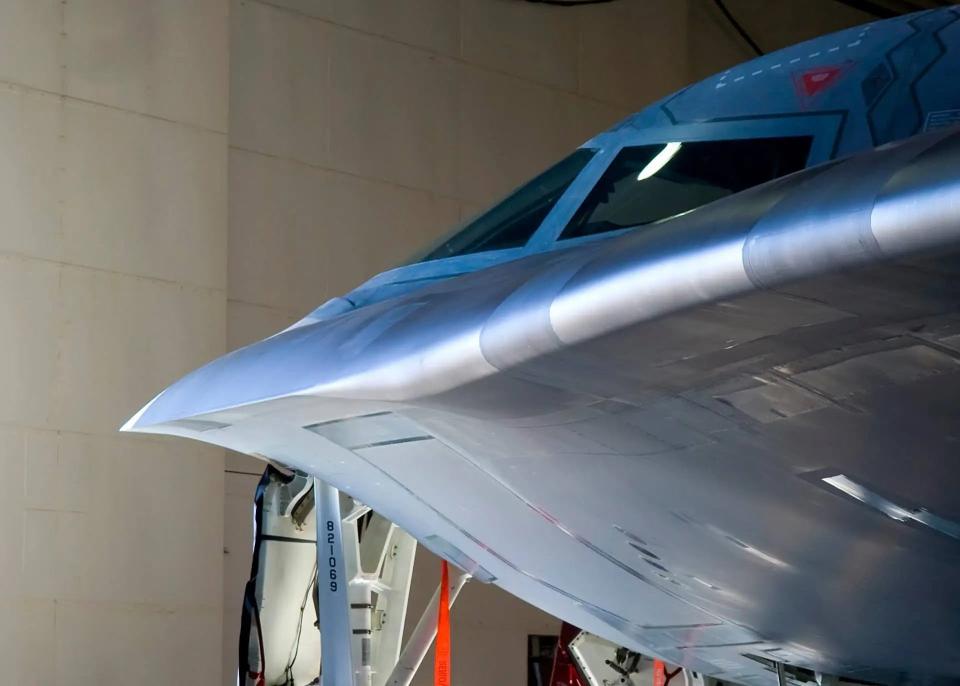
So, if there ever were an alien 'crash retrieval program,' certainly the playbook for such a thing, as well as the capabilities to execute it, exists in a far more robust form than most likely realize. And if a UFO were ever to really crash on Earth, this established apparatus would likely get to it first and be used in an attempt to understand its abilities.
But that's all a big hypothetical. Regardless, the activities of this community, which includes a grand mix of science, espionage, and logistics, would likely read like science fiction, to begin with.
Contact the author: joe@thedrive.com

